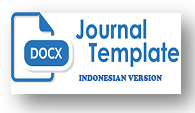Analisis dan Perancangan Feature Engineering Pada SQL Execution Plan Aplikasi Apache Spark
DOI:
https://doi.org/10.29240/arcitech.v1i2.4120Keywords:
Database, Artificial Intelligence, Apache Spark, Feature Engineering, SQLAbstract
To process data in RDBMS, it is commonly used what is called SQL. This SQL can be simple or complex depending on the join statement, the tables involved, filter statement, and many more. If it is complex and burdensome to the system, then the performance of the database as a whole will decrease and SQL execution will not finish. That's why it's important to know, what components are involved when executing SQL through the SQL Execution Plan. The components in the SQL Execution Plan can be very diverse, so artificial intelligence is used to help analyze and conclude what factors have the most role in determining performance. Furthermore, these factors are called feature engineering. The purpose of this research is to formulate what features exist in the SQL Execution Plan when we send SQL commands to the system. The research method used is the Prototyping process model.
Downloads
References
Apache Hadoop. (2022). Diambil kembali dari http://hadoop.apache.org/.
Apache Spark. (2022). Diambil kembali dari https://spark.apache.org/.
Armbrust, M., Huai, Y., Liang, C., Xin, R., & Zaharia, M. (2015, April 13). Deep Dive into Spark SQL’s Catalyst Optimizer. Diambil kembali dari https://databricks.com: https://databricks.com/blog/2015/04/13/deep-dive-into-spark-sqls-catalyst-optimizer.html
Chanowich, E. d. (2001). Query Optimization Advanced.
Goutam, S. (2021, Februari 12). Apache Spark Logical And Physical Plans. Diambil kembali dari https://blog.clairvoyantsoft.com/: https://blog.clairvoyantsoft.com/spark-logical-and-physical-plans-469a0c061d9e
Han, J. a. (2000). Data Mining Concepts & Techniques. Morgan Kaufmann Publishers.
Harianto Antonio, Novi Safriadi. (2012). Rancang Bangun Sistem Informasi Administrasi Informatika.
Korth, H. d. (1991). Database System Concepts. Singapura: McGraw Hill.
Leturgez, L. (2020, Juli 23). Spark’s Logical and Physical plans … When, Why, How and Beyond. Diambil kembali dari http://www.medium.com: https://medium.com/datalex/sparks-logical-and-physical-plans-when-why-how-and-beyond-8cd1947b605a
Ni Ketut Dewi Ari Jayanti, Ni Kadek Sumiari. (2018). Teori Basis Data. Yogyakarta: Penerbit ANDI.
Rahardja, U. R. (2017). Design of Business Intelligence in Learning Systems Using iLearning Media. Universal Journal of Management, 227-235.
Russell, S. J. (2016). Artificial Intelligence : a modern approach. Malaysia: Pearson Education Limited.
Sunarya, A. S. (2015). Sistem Pakar Untuk Mendiagnosa Gangguan Jaringan Lan. CCIT, 8(2), 1-11.
Wahono, R. S. (2014, Januari 10). romisatriawahono.net/2014/01/10/kontribusi-penelitian-dan-perbaikan-metode/. Diambil kembali dari romisatriawahono.net: https://romisatriawahono.net/2014/01/10/kontribusi-penelitian-dan-perbaikan-metode/
Y. Bengio, A. C. (2013). Representation learning: A review and new perspectives. IEEE Transactions on Pattern Analysis and Machine Intelligence, 1798–1828
Downloads
Published
How to Cite
Issue
Section
Citation Check
License
Authors who publish with Arcitech: Journal of Computer science and Artificial Intelligence agree to the following terms:
- Authors retain copyright and grant the journal right of first publication with the work simultaneously licensed under a Creative Commons Attribution-NonCommercial-ShareAlike 4.0 International License (CC BY-NC-SA 4.0) that allows others to share the work with an acknowledgment of the work's authorship and initial publication in this journal.
- Authors are able to enter into separate, additional contractual arrangements for the non-exclusive distribution of the journal's published version of the work (e.g., post it to an institutional repository or publish it in a book), with an acknowledgment of its initial publication in this journal.
- Authors are permitted and encouraged to post their work online (e.g., in institutional repositories or on their website) prior to and during the submission process, as it can lead to productive exchanges, as well as earlier and greater citation of published work (See The Effect of Open Access).













